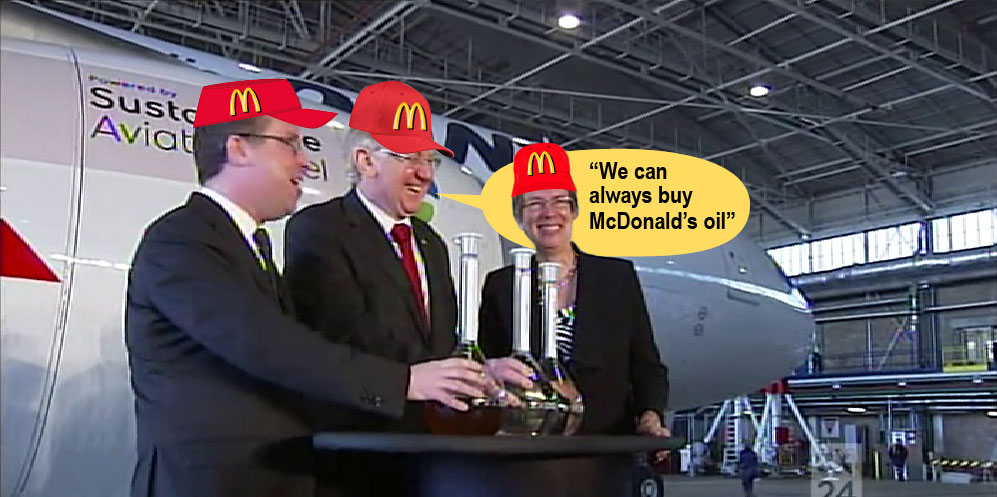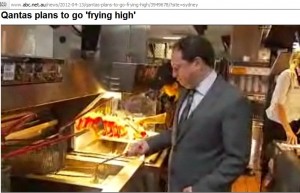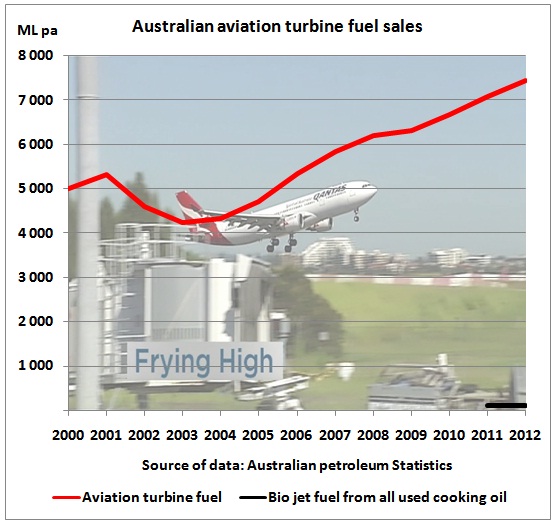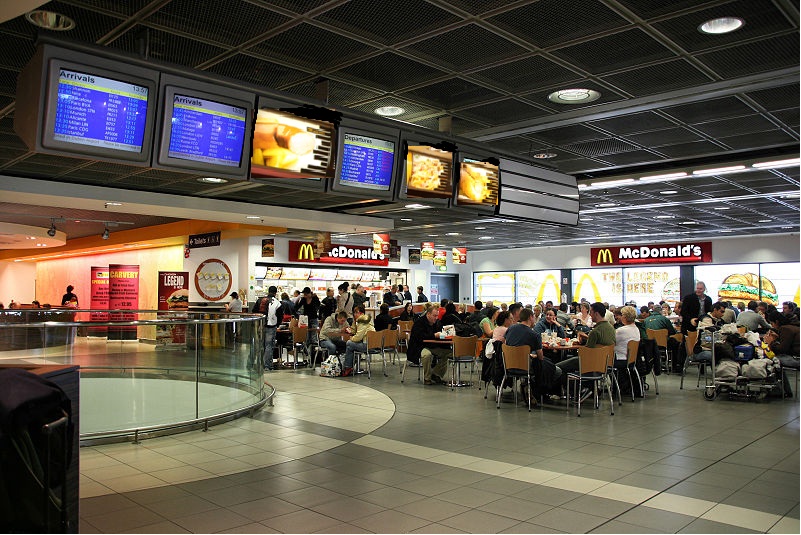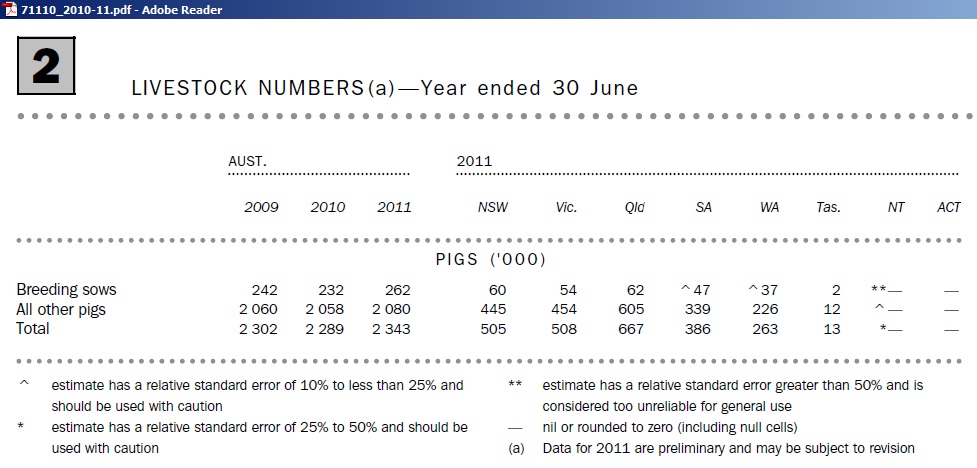Less than 6 years after an Australian senior energy bureaucrat announced in a Parliamentary hearing that new technologies can overcome peak oil (“if the price of eggs is high enough, even the roosters will start to lay”) [1] this “cocks-to-liquids” fuel (CTL1) has now been further developed into a generation 2 fuel called “cooking-to-liquids” (CTL2). In a landmark flight from Sydney to Adelaide a Qantas A 330 used in one of its engines 50% of A1 jet fuel distilled from recycled cooking oil procured from McDonald’s fast food stores in the US.
Qantas CEO Alan Joyce, Minister for Tourism, Resources and Energy, Martin Ferguson and Ann Pickard, Country Chair of Shell enjoy holding Erlenmeyer bulbs with recycled cooking oil and Jet A1 fuel processed from it, hoping to usher in a new era of sustainable flying.
http://www.abc.net.au/news/2012-04-13/qantas-plans-to-go-frying-high/3949678/?site=sydney
The media was quick to join the action, giving a helping hand to an unidentified fish & chips shop, thus paving the way for what will hopefully become a domestic source of fuel for Australia’s booming air traffic:
And passengers loved it, too. Not only because of feeling good for perceived environmental benefits. The pilot reported passengers immediately wanted to benefit from a “frequent frying points” program. How would that work? Easy. In the year 2525 (err, 2025), if airlines are still alive, passengers would need to show 1,000 receipts from fast food outlets before being able to buy a ticket.
This bizarre publicity stunt comes shortly after a committee found that Sydney needs a 2nd airport. How about that: the world’s first Bio Airport!
Australia’s used cooking oil reserves (3P)
Let’s do some back-of-the-envelope calculations. How much re-cycled cooking oil do we have? There are conflicting reports. They range from 50,000 tons per year (Natural Fuels Australia Ltd.)[2] to an upper limit of around 100 ML (CSIRO) – quite a big difference.
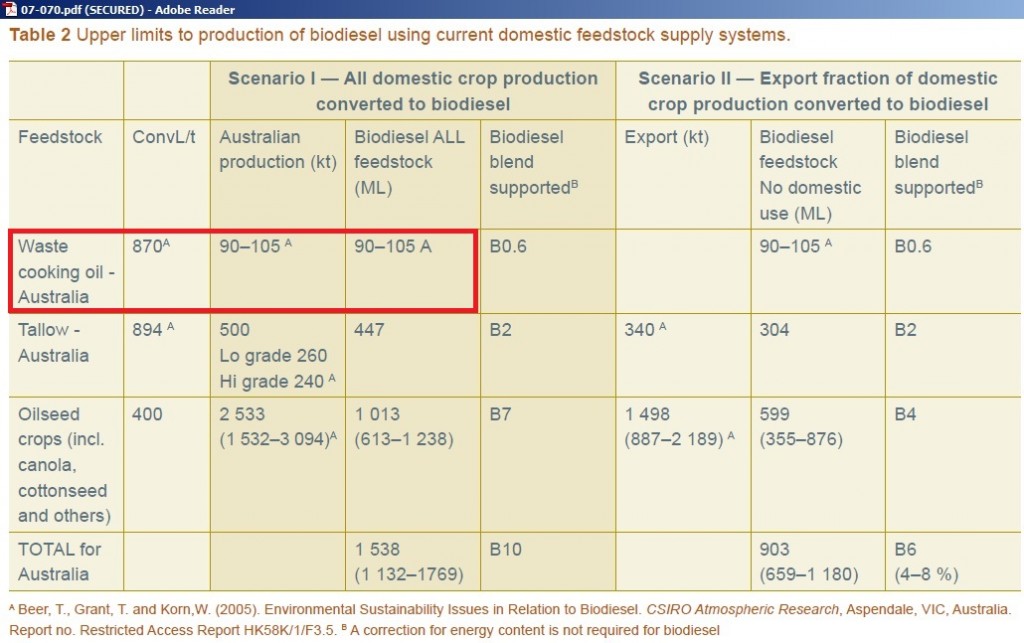
https://rirdc.infoservices.com.au/downloads/07-070.pdf
Being optimistic we take the upper limit, assume that 1 ML of oil can be turned into 1 ML of Jet A1 and compare this with actual aviation turbine fuel consumption in Australia:
See that black line at the bottom? That’s the start for sustainable aviation
Flying outlook 2025: An elite of waiting passengers is recharging their frequent frying point cards before boarding. Due to the limited number of bio fuel flights departure boards have been replaced by monitors showing information about recycled cooking oil. The catch: airlines have introduced weight surcharges for obese passengers.
Fry, baby, fry
Addendum (17/4/2012)
Now its pigs which can be fried to get at aviation fuel, according to a brilliant idea of the Climate Spectator where they picked up this story.
Pigs might fry – sustainable aviation tale
http://www.climatespectator.com.au/commentary/pigs-might-fry-sustainable-aviation-tale
http://www.abs.gov.au/ausstats/abs@.nsf/mf/7111.0
[1] “Roosters that lay eggs”, ABARE and other stories
http://www.abc.net.au/4corners/special_eds/20060710/
http://www2b.abc.net.au/tmb/Client/Message.aspx?b=21&m=7703&ps=50&dm=2
[2] Submission 95 to the Senate Inquiry on oil supplies, 2006, Natural Fuels Australia Ltd http://www.aph.gov.au/Parliamentary_Business/Committees/Senate_Committees?url=rrat_ctte/completed_inquiries/2004-07/oil_supply/submissions/sublist.htm
